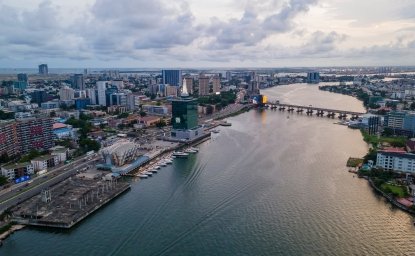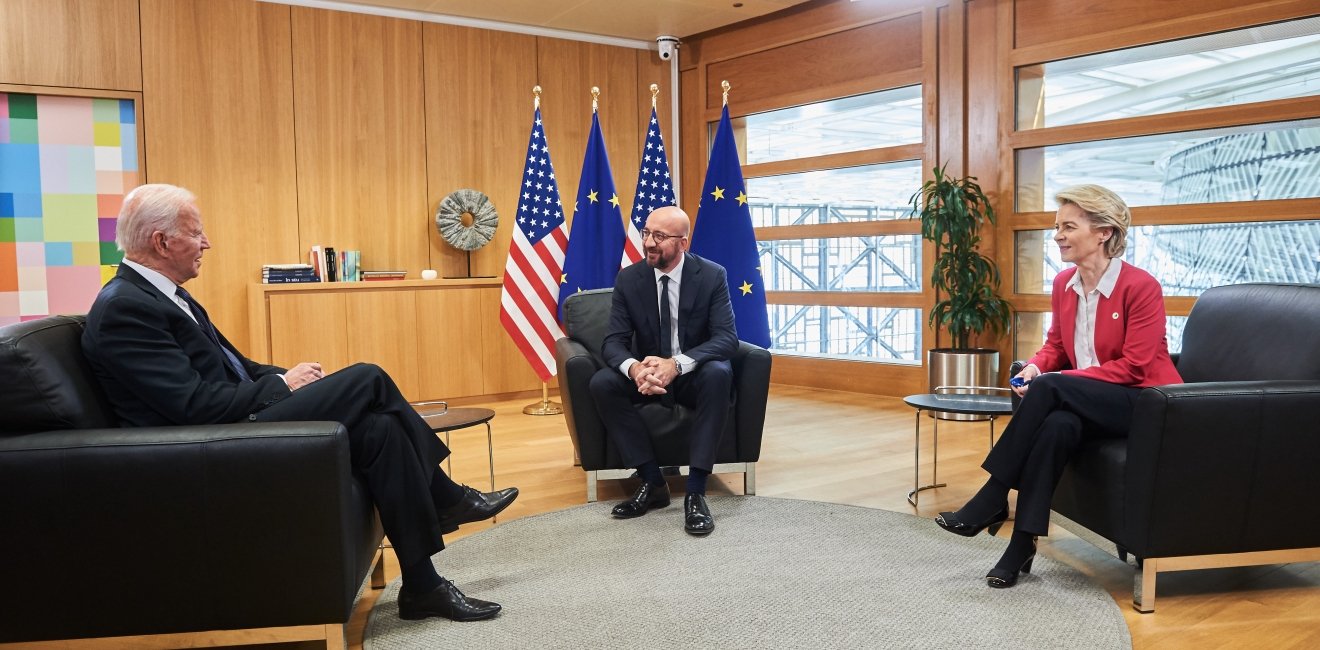Just when it seemed that subtle, skillful diplomacy had been consigned to the attic for foreign policy relics, Joe Biden and Ursula Von der Leyen have pulled a rabbit out of the hat.
Ahead of their Friday (October 20) meeting the US President and the President of European Union Commission have reached an understanding on how to confront a Chinese manufacturing juggernaut that is increasingly hostile to international trade rules. They have also avoided a clash on how best to infuse sustainability into the production and trade of steel and aluminum products.
Each side showed compromise in striking this deal, which follows two years of negotiations. The Europeans – who famously espoused “de-risking” rather than “de-coupling” in their relations with China – have recognized the threat posed by Chinese non-market steel policies and decided that bringing a dispute case to the World Trade Organization (WTO) would be fruitless.
This decision took considerable courage given that for Germany, the EU’s economic powerhouse, China is the country’s largest overall export market and the second largest market for sales of German cars with nearly $31 billion in sales in 2022. For Volkswagen, the Chinese market constitutes 40% of its overall sales.
But as Chinese exports of electric cars surge into the EU while German car exports to China fell 21% in the first six months (overall exports fell by 8%), Berlin is now on board with aggressive counter measures against China. Last month the Commission launched an investigation into Beijing’s subsidies for the electric vehicle sector.
The outlines of the Global Arrangement on Sustainable Steel and Aluminum (GASSA) indicate that Brussels and Washington would lead a “club” of market driven steel producers dedicated to “clean” steel production. Full details have yet to emerge, but it appears that the steel “club” will affix duties of 25% to imports of steel and 10% to aluminum imports. Other members of the club have yet to be identified but presumably will include, among others, Japan, Korea, Norway, Canada and Mexico.
Washington’s efforts to bully Brussels into giving it a CBAM exemption while agreeing to a separate indigenous system targeting China and other “dirty steel” producers ran into a brick wall. Such a system, the EU maintains, would violate WTO rules against discriminating among trading partners.
According to the Organization for Economic Cooperation and Development (OECD), global steel production has surged over the past five years and sits today at 2.5 billion metric tons, up 56 million metric tons from a year ago. Although global demand is “faltering” according to the OECD, Chinese producers continue to rev up output including through new plants built in Southeast Asia. The Paris-based organization of advanced countries attributes this disconnect between demand and supply–current and future–to massive government subsidies in the form of grants, tax breaks and land-use rights.
Although China participates in OECD discussions designed to tackle overproduction, years of talks have yielded precious little. Donald Trump and his US Trade Representative Robert Lighthizer dealt with the issue in 2018 in a heavy-handed but effective manner by slapping 25% duties on all steel imports along with 10% duties on imports of aluminum. But those duties were applied globally and had little impact on Chinese producers whose access to the US market had already been stymied by layers of duties applied over many years to offset dumping and subsidized exports.
Producers elsewhere, including in Europe, bore the brunt of those Trump-Lighthizer tariffs. Trump famously said the trade wars were easy to win but against big players like the EU, they come at a cost. EU retaliatory tariffs hammered US steel producers as well as Harley Davidson, Levi Strauss and producers of Kentucky bourbon.
Some of the steel tariffs were lifted early on by Trump but the duties on EU steel and aluminum remained in place until President Biden lifted them in 2021. In exchange the EU withdrew its tariffs and the two sides pledged to negotiate the Steel Arrangement, setting this month as the deadline. Failure to strike a deal would have led to a snapback of the damaging tariffs and undermined a bilateral relationship that is critical to both sides.
With the agreement on addressing China’s overcapacity seemingly sorted, the two sides have set the other part of the negotiations –dirty steel production – to the side for the time being. On this point it seems as though Washington has been the one to show flexibility. As a means of addressing climate change, the Biden administration has been all in on the subsidy-laden Inflation Reduction Act which aims to foster clean technologies through tax breaks and subsidies.
While the EU has subsidies of its own, its central green pillar is the Carbon Border Adjustment Mechanism (CBAM), a complex system that prices carbon based on the market for tradable emissions permits. The system, which came online on October 1, will apply to imports of steel and aluminum – as well as products in five other industries. Steel producers in countries which have a carbon pricing system would be able to deduct the costs paid in their own markets. Importers of steel from other countries would have to pay the full price, which currently is about $85 per ton of carbon emitted.
For the United States, one of the few countries with no national carbon pricing scheme, this constitutes a problem. Washington’s efforts to bully Brussels into giving it a CBAM exemption while agreeing to a separate indigenous system targeting China and other “dirty steel” producers ran into a brick wall. Such a system, the EU maintains, would violate WTO rules against discriminating among trading partners.
The outlines of the Global Arrangement on Sustainable Steel and Aluminum (GASSA) indicate that Brussels and Washington would lead a “club” of market driven steel producers dedicated to “clean” steel production.
Carbon pricing programs face political resistance from some in the United States. California, however,has a pricing system and 11 states in the Northeast use a system to cap and reduce emissions produced by the power generation sector— Sheldon Whitehouse (D-RI) has introduced national carbon pricing legislation.
In June, US Trade Representative Katherine Tai, instructed the US International Trade Commission to conduct a study into the greenhouse emissions produced by steel producers–foreign and domestic–operating in the United States. The report is due at the end of January 2025, which will give the Biden administration some time to reflect on its options.
Apart from the delay on a deal for the sustainability segment of the Steel Arrangement other elements of this agreement are problematic. For one thing, the system will certainly discriminate between WTO members, which would violate the Most Favored Nation principle. For another, this deal broadcasts a pronounced lack of confidence the US and the EU have in the WTO to resolve disputes involving Chinese subsides and environmental issues. Brussels and Washington seem to agree that the WTO rules, as they are written now, fail to address these two critically important issues. Until the rules better reflect current realities, don’t expect these two trading powers to abide by them.
It's not a perfect outcome, but in this ever more fragmented world, bilateral agreements are a far sight better than no agreement at all.
Author

Director of the Information and External Relations Division and Chief Spokesman at the World Trade Organization (retired)

Global Europe Program
The Global Europe Program is focused on Europe’s capabilities, and how it engages on critical global issues. We investigate European approaches to critical global issues. We examine Europe’s relations with Russia and Eurasia, China and the Indo-Pacific, the Middle East and Africa. Our initiatives include “Ukraine in Europe”—an examination of what it will take to make Ukraine’s European future a reality. But we also examine the role of NATO, the European Union and the OSCE, Europe’s energy security, transatlantic trade disputes, and challenges to democracy. The Global Europe Program’s staff, scholars-in-residence, and Global Fellows participate in seminars, policy study groups, and international conferences to provide analytical recommendations to policy makers and the media. Read more


Wahba Institute for Strategic Competition
The Wahba Institute for Strategic Competition works to shape conversations and inspire meaningful action to strengthen technology, trade, infrastructure, and energy as part of American economic and global leadership that benefits the nation and the world. Read more

Explore More
Browse Insights & Analysis
Understanding Trade Promotion Authority (TPA): Implications for US Trade

The Innovative Landscape of African Sovereign Wealth Funds


